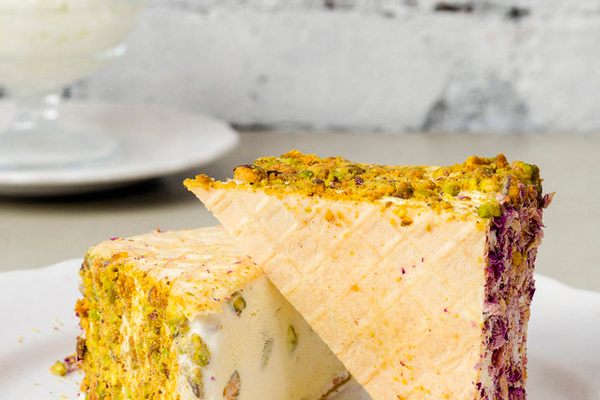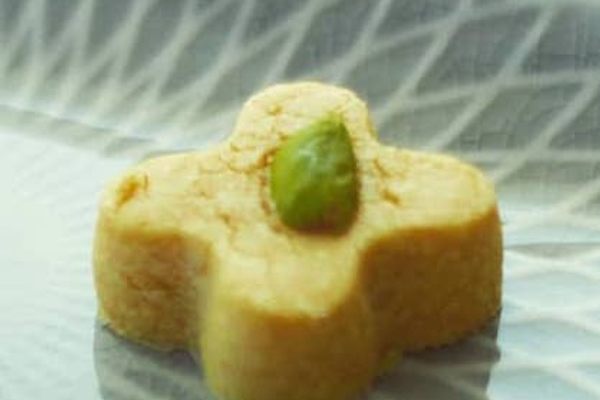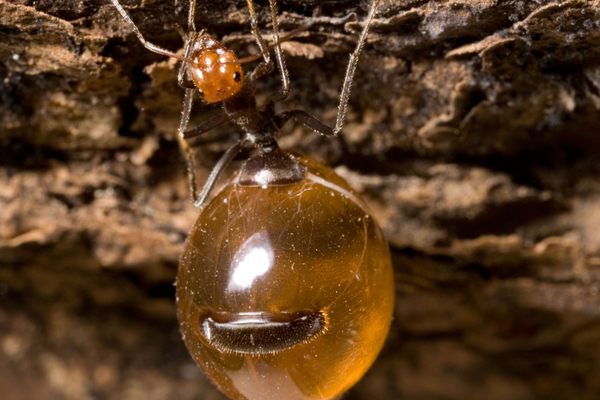Ingredients & Condiments
Desert Truffles
So strong is Kuwaitis’ love for this seasonal delicacy that an entire market gets set up just for its sale.
In the early spring, the truffle souq in Al Rai, just northwest of Kuwait City, bustles with connoisseurs sniffing for white and beige culinary gold. The demand for desert truffles, called fagga in Kuwait, is so high that over 500 vendors apply each year for the 120-odd stalls available at the market, which was set up in 2006.
The arid stretches of sand in the deserts of the Middle East and North Africa are prime ground for these desert truffles, which, unlike their dark European counterparts, are lighter in color and pungency. They are also cheaper.
Kuwait’s local production of their favorite truffle dropped after the Iraqi invasion in 1990. Since that time, foragers have been afraid of roaming the desert for wild truffles, as the Iraqi army left behind unexploded landmines. Kuwait’s changing landscape and climate has also affected production: To grow, the truffles require rain, which can be irregular, and recent urban encroachment on the desert has left less space for truffles. Most of Kuwait’s desert truffles now come from other parts of the Middle East and Northern Africa, primarily Iran, Saudi Arabia, Libya, Morocco, and Tunisia. In war-torn truffle-growing regions, such as Syria and Iraq, foraging can become very dangerous, with reports of truffle hunters captured and killed by suspected Islamic State militants.
When rain and lightning fall on the desert mid-winter, Bedouins rejoice because they know the lightning causes the truffles to grow. Lightning activates the nitrogen compounds in rain, which then encourages truffle growth underground. Once these delectable desert fungi mature, they begin to crack the soil, a telltale sign for harvesters who come to collect in the final months of winter and beginning of spring.
Though they’re from the fungi kingdom, desert truffles more closely resemble potatoes. Spongy, with an earthy taste, they are rich in protein and act as flavor enhancers for meats, stews, and sauces, going especially well in gravies with an onion base. They can also be eaten on their own, with a little olive oil and a cilantro garnish. Fagga are a popular ingredient in kabsa, a delicately spiced meat and rice one-pot dish popular in the Gulf countries.
Desert truffles have a long history as a food. The 14th-century explorer Ibn Battuta records having seen them in abundance in the Sahara Desert, and they have long been featured at banquets given by Middle Eastern monarchy. But at half the price (or less) of the European truffle, you don’t need to be a royal to enjoy this princely delicacy.
Where to Try It
-
Souq al Juma/Friday Market (سوق الجمعة)
Friday Market, Kuwait City, KuwaitA seasonal truffle market pops up near this famous Friday market. Look for fagga during the spring. The market is located south of Fourth Ring Road and West of Airport Road.
Written By
 Rohini Chaki
Rohini Chaki
Sources
- www.thenational.ae/world/mena/truffle-loving-kuwaitis-flock-to-special-souq-for-winter-delicacy-1.713307
- www.nytimes.com/2004/04/14/dining/beneath-desert-sands-an-eden-of-truffles.html
- news.kuwaittimes.net/truffles-wildflowers-bring-whiff-spring-kuwait-desert-blooms-heavy-rains/
- roadsandkingdoms.com/2016/hunting-for-truffles-in-iraq/
- www.wsj.com/articles/syrias-war-jolts-a-beloved-tradition-gathering-desert-truffles-1524916800
- www.kurdistan24.net/en/news/cf2c00c8-b19d-46b3-97a6-72e446c993fa
- www.anbg.gov.au/fungi/case-studies/desert-truffles.html
- www.researchgate.net/publication/235443086_Mycorrhiza_between_Kobresia_bellardii_All_Degel_and_Terfezia_boudieri_Chatin
- books.google.com/books?id=czKwMrKV-HIC&pg=PA625&lpg=PA625&dq=kuwait+desert+landmine&source=bl&ots=HB5sggr_p5&sig=ACfU3U1MDX7CMXz8nbOiPJZUZshlyiIjdA&hl=en&sa=X&ved=2ahUKEwjqlMKK_dfgAhWqc98KHXt5D-cQ6AEwDXoECAkQAQ#v=onepage&q=kuwait%20desert%20landmine&f=false
- www.youtube.com/watch?v=USjMx7RVKHA















